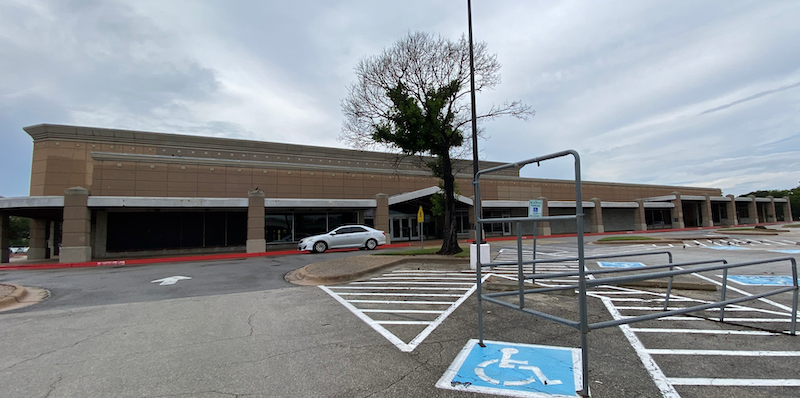
Indigent healthcare agency to build two clinics and buy a former department store.
The Travis County Healthcare District, also called Central Health, has issued bonds worth $76.4 million to buy and renovate a former Sears department store and to build two new clinics on land already owned by the agency.
Central Health sold the new debt in two parts: $13.63 million for the new clinics in Del Valle and Hornsby Bend, and $62.76 million for the Sears building and another smaller building located in the Sears parking lot. That latter is currently occupied by CommUnityCare, a Central Health subsidiary.
The 190,000-square-foot Sears building is about twelve times the size of the agency’s current 16,000 square foot headquarters on East Cesar Chavez, and it’s unclear what Central Health will do with all the space.

After renovations, Central Health plans to relocate from its current headquarters to the Sears building and combine offices with two subsidiaries that currently lease offices, Sendero Health Plans and CommUnityCare. But even after that consolidation, Central Health will still only use a maximum of 90,000 square feet of the new building for administrative space, according to capital planning documents and a presentation by CEO Mike Geeslin.
The remaining 100,000 square feet—about the size of two football fields—could be used for clinical space. “The former Sears building would be for administrative consolidation and flexible clinical space for any type of future expansion, where it makes sense and needs to be centralized,” Geeslin told Travis County Commissioners Court August 24th.

As previously reported by the Bulldog, Central Health has come under fire from an advocacy organization, Health for Travis County, for siting so much clinical space in one of the wealthier parts of town. The Sears building is located at the Hancock Center at 43rd and Red River Streets near the historic Hyde Park neighborhood. “A new headquarters certainly offers Central Health employees convenient centralized office space. However, the provision of healthcare services is needed to be delivered in a non-centralized manner that considers population shifts out of the city into the county,” said Frank Rodriguez, a former Central Health board member who represents Health for Travis County.
In view of these criticisms, Geeslin was at pains to emphasize to commissioners that the sprawling new facility wouldn’t suck away resources from clinics elsewhere. It would be used only “to the extent that it makes sense and there needs to be highly specialized care,” he said.
Geeslin defended the Sears location as “a central place that’s equally accessible whether you’re living in Jonestown out west, or in Manor, or Pflugerville, or down in Del Valle.” He added, however, that “the vast majority of what we do is going to be pushed out into our health and wellness center expansion sites in Eastern Travis County…The priority is to push the primary care, the dental care, and as much services as possible out to where people are.”
‘Private activity’
Central Health could provide more clarity about which services it will install in the new Sears building after completing a system-of-care study next year. It has hired an outside consultant to conduct that study at a cost of up to $494,000, funded by the Episcopal Health Foundation through a grant to Central Health.
The contracted firm, Guidehouse Inc., will evaluate the services that Central Health is currently providing, identify gaps and disparities, and make forecasts about future demand that will inform efforts to expand or consolidate.
But in the meantime Central Health is also planning for the possibility that it might not be able to use all the space at its expansive new headquarters. In its recent bond auction, Central Health sold the debt for the Sears building as a taxable bond—unlike the bond for the new clinics, which was tax-exempt—so that it could lease out parts of the building to commercial tenants.
“The reason that we sold one bond taxably has to do with private use and private activity that potentially could occur in the administrative building in terms of leasing, sub-leasing, etc.,” said Blake Roberts of PFM Financial Advisors, who acted as a financial advisor on the bond sale.
“Out of an abundance of caution, after working with tax council, the decision was made to sell those bonds taxably to provide flexibility to Central Health for future use,” he told the Travis County Commissioners Court.

Likewise, Central Health Board Chair Sherri Greenberg said August 23rd, “We had to do those (certificates) taxable because there could be some, what we call, private activity to that. It’s IRS regulations.”
That means that Central Health will pay a higher interest rate on the debt for the Sears building than it will for the debt for the clinics, though the difference is fairly minimal—2.1 percent compared to 1.8 percent. Roberts said, “In the current market there’s a small spread between taxable rates and tax-exempt rates.”
Bond auction
Central Health concluded its bond auction August 23rd. Bank of America was the winning bidder out of seven for the $13.6 million of tax-exempt debt for the new health clinics. The final award will be at an interest rate of 1.84 percent, according to Roberts, who called this a “very, very good rate all things considered.” The larger $62.8 million bond for the new headquarters went to Raymond James, the best of eight bidders, at an interest rate of 2.12 percent.
The bonds are issued in the form of certificates of obligation, a type of public debt that doesn’t require voter approval. They’re payable over 20 years.
Central Health’s Board of Managers approved the new debt August 23rd, the same day that winning bids were accepted from lenders. The following day, the Travis County Commissioners unanimously greenlighted the sale, which closes September 21st. The commissioners previously already approved the acquisition of the former Sears building and the land for the two new clinics.
Board member opposes
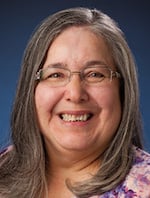
At the Board of Managers’ August 23rd meeting, Board Secretary Cynthia Valadez voted against the debt for the new headquarters but for the debt for the new clinics. “I do not want work to begin on (the headquarters) while we still have unmet commitments to our Eastern Crescent residents. I have seen commitments made before and they didn’t happen,” she said.
The other eight members of the board voted in favor of both debt issuances. However, board member Shannon Jones voiced similar concerns, asking for a board vote to give direction to Central Health staff to give priority to the new clinics. “It would not be appropriate to build a new central administrative building—even though I’m supportive of it—when we have not completed the construction of these facilities in the eastern crescent,” he said.
CEO Geeslin and Board Chair Greenberg responded to Jones’ request by making a commitment to add an agenda item to an upcoming meeting to discuss construction timelines.
Commissioners supportive
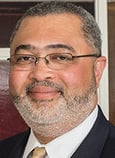
Travis County Precinct 1 Commissioner Jeff Travillion raised a similar point the next day, during the meeting of the commissioners court, which has final approval over Central Health’s finances. Travillion asked Central Health executives about the “sequencing” of the two projects. “I am really interested in making sure that the sites in the eastern crescent be given priority,” he said.
The other commissioners expressed similar views, signaling strong support for the clinics and asking that they be given priority over the new headquarters, though none actually opposed the issuance of bonds for the new headquarters.
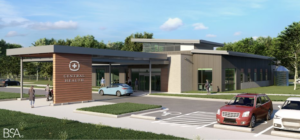
Precinct 4 Commissioner Margaret Gómez said, “I second Commissioner Travillion’s desire that these clinics get done. I think folks have waited 11 years for a clinic in Del Valle. And I can understand their frustration of waiting and I really hope that those clinics get done before long.”
Precinct 2 Commissioner Brigid Shea said, “I know the Sears effort is a big one. It’s four times the money allocated for the eastern clinics. But I think it’s really critical that we send a message that these eastern clinics be a priority.”
Central Health’s chief executive and board chair both voiced agreement with the commissioners. Geeslin pointed out that Central Health already has active procurements out for a general contractor for the Hornsby Bend and Del Valle clinics and aims to award a construction contract in October. Greenberg said, “The Eastern Crescent has been and remains top priority for our board.”
According to planning documents, the Hornsby Bend clinic will feature primary care services, behavioral health services, a limited pharmacy, and telehealth for select specialty services. The Del Valle clinic will offer primary care, behavioral health, dental, select telehealth services, and a pharmacy.
Growing real estate portfolio
Central Health already owns the land on which the new clinics will be built, so the $13.6 million bond is just for construction.
Central Health also owns several existing clinics—in Montopolis, Gracywoods, Colony Park, and near Hyde Park—as well as the Judge Guy Herman Center for Mental Health Crisis Care, which it leases to Integral Care for $1 a year. And it owns its current headquarters on Cesar Chavez Street—which it hasn’t yet made plans to divest—and an acre of undeveloped land in the Georgian Acres neighborhood.
But the crown jewel of the agency’s property portfolio is the former Brackenridge Hospital campus, which Central Health inherited from the City of Austin. The hospital has been demolished and the bulk of the 14-acre site is now awaiting redevelopment. A parking garage stands on one corner of the site and is leased to Seton Healthcare Family. Next to that, a 17-story office tower is under construction on land leased to a nonprofit linked to UT, under a no-bid lease.
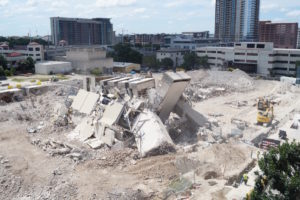
Central Health has drawn up plans to invite developers to build as many as six high rises on the property, including a hotel, apartment tower, retail spaces, and offices. The agency would then play landlord to tenants of those properties, using the money to supplement its tax revenue. “Our ultimate goal is to maximize the revenue-earning potential of the entire property to fund health care for Travis County residents with low income,” Central Health says on its website.
The land alone at the Brackenridge site is worth $93.7 million, according to the Travis Central Appraisal District, and the buildings on the site are worth $72.9 million, even though most of it remains undeveloped.
The site’s proximity to the University of Texas Medical District and the Central Business District enhances its value. In fiscal year 2020, the agency generated $12.3 million through the two leases to Seton and the UT foundation, giving a foretaste of the revenue that might be expected from further development. When the site was occupied by Brackenridge Hospital, which was leased to Seton, it earned Central Health about $35 million a year, until Seton packed up and left in 2017.
Altogether Central Health’s real estate is worth more than $204 million, according to appraisal records. The market value of its portfolio, which tends to be higher than the appraised value, could be some multiple of that.
Long-term savings?
The new bonds issued by Central Health allow it to exploit ultra-low interest rates to expand its real estate portfolio without paying for it up-front. Borrowing costs are very low right now in large part because of low interest rates set by the Federal Reserve, the U.S. central bank. The Federal Reserve slashed interest rates last year in response to the pandemic-induced recession.
Another factor is the prospect of higher income taxes, which has triggered a scramble by wealthy investors for tax-exempt municipal bonds, pushing down interest rates. That helps borrowers like Central Health, which will pay lower interest on the debt than the current rate of inflation. The agency’s credit rating of Aa2 also helps.

Central Health’s Chief Financial Officer Jeff Knodel referred to these market dynamics in a presentation to the commissioners court August 24th, pointing to the “ownership benefits including long-term asset appreciation and equity” and “favorable market conditions—taking advantage of low market interest rates.”
Even so, repaying the debt will cost nearly $5 million per year through 2041, according to Roberts. Central Health executives have portrayed this cost as being partly offset by savings on leases that will no longer be needed. Knodel told commissioners that “over the 20 year term of the bonds there’s a savings of a little bit over $17 million. Breakeven occurs at the 15 year level.”
However, that projection relies on assumptions about lease costs in Austin over the next 20 years, and it does not offer any comparison to alternative properties that could have been considered for acquisition. According to Health for Travis County, the community group opposed to the new headquarters, the breakeven projection wrongly assumes that Central Health would need to lease space equivalent in size to the Sears building if it didn’t buy that building, even though that’s far more space than the agency currently is leasing.
That group questioned the need for that much space over the long term. In a briefing to county commissioners, Health for Travis County stated, “Central Health wants to do a ‘one stop’ facility that offers clinical services. Yet at the same time Central Health has issued an RFP to redesign its system of care. Does it not make sense to first know how care needs to be integrated and types of care that need to be delivered before assuming that a ‘one stop shop’ for clinical services that haven’t been defined or justified is warranted?”
Tax impact
To fund the repayment of the bonds, Central Health is planning to increase its debt service tax from 0.0589 per $100 of valuation to $0.261, an impact of about $8 per taxpayer with a median home value of $386,000.
On top of that, Central Health’s board will vote September 2nd to increase its maintenance tax rate from $0.110306 to $0.111814 per $100, which will bring in 6 percent more revenue than last year. The average homestead value in the district has increased 8.7 percent, four times the pace that it did last year.
Together the new debt tax plus the higher maintenance tax will result in a $431.75 tax bill for the average homestead, up $39.75 from last year, according to a budget presentation at Central Health’s August 23rd board meeting.
The board also increased the homestead exemption for seniors and those with disabilities from $85,500 to $100,000, which will partly offset the impact of the tax increases for some taxpayers.
Central Health has been stockpiling cash in anticipation of making further investments in healthcare services or real estate in coming years. Executives are also cautious about whether federal funding models could change, and want to maintain ample reserves for that reason. “We anticipate having a contingency reserve carry forward to start the year of $226 million,” said Lisa Owens, the deputy chief financial officer. On top of that, Central Health has an emergency reserve of $39 million.
In the meantime, Central Health has reduced its spending on healthcare services, in part because fewer clients have been seeking care from the agency. Central Health is budgeting $102 million for healthcare services in FY 2022, down from $155 million in the current fiscal year.
Due to higher revenues and lower expenses, the contingency reserve is projected to grow to $311 million by the end of FY 2022.
 Trust indicators: Bulldog reporter Daniel Van Oudenaren is a journalist with 12 years experience in local, state, and international reporting.
Trust indicators: Bulldog reporter Daniel Van Oudenaren is a journalist with 12 years experience in local, state, and international reporting.
Links to related documents:
Notice of Intention to Issue Certificates of Obligation, June 15, 2021 (2 pages)
Capital Project Budget for Hancock Headquarters Consolidation and Clinical Expansion, June 14, 2021 (17 pages)
Briefing by Health for Travis County: Headquarters vs Healthcare (7 pages)
Related Bulldog coverage:
Central Health plans $63 million headquarters, August 3, 2021
No-bid Brackenridge lease approved, July 17, 2018







